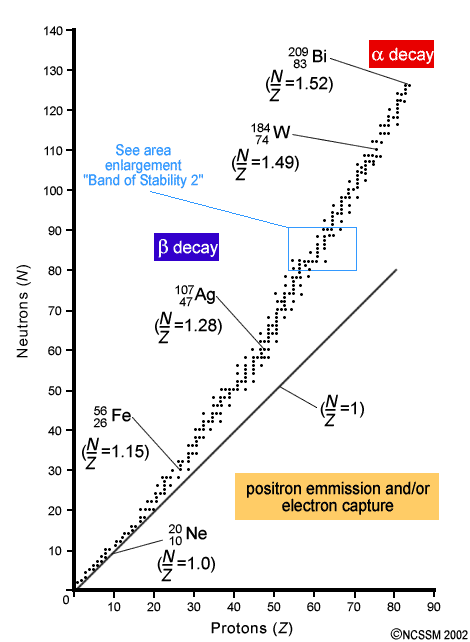How do beta emission and positron emission affect the neutron-proton ratio?
1 Answer
The neutron-proton ratio decreases during β⁻ decay and increases during positron decay,
β⁻ EMISSION
β⁻ emission is a process in which a nucleus emits an electron.
For example, neon-23 decays into sodium-23 by β⁻ emission.
₁₀²³Ne → ₁₁²³Na + ₋₁⁰e
In neon-23, there are 13 neutrons and 10 protons. The neutron:proton ratio is 13:10 or 1.30:1.
In sodium-23, there are 12 neutrons and 11 protons. The neutron:proton ratio 12:11 or 1.09:1.
The neutron:proton ratio decreases during β⁻ decay.
POSITRON EMISSION
β⁺ or positron emission is a process in which a nucleus emits a positron — the antimatter counterpart of an electron.
Magnesium-23 decays by positron emission.
In magnesium-23, there are 11 neutrons and 12 protons. The neutron:proton ratio is 11:12 or 0.9:1.
In sodium-23, there are 12 neutrons and 11 protons. The neutron:proton ratio 12:11 or 1.09:1.
The neutron:proton ratio increases during positron decay.


